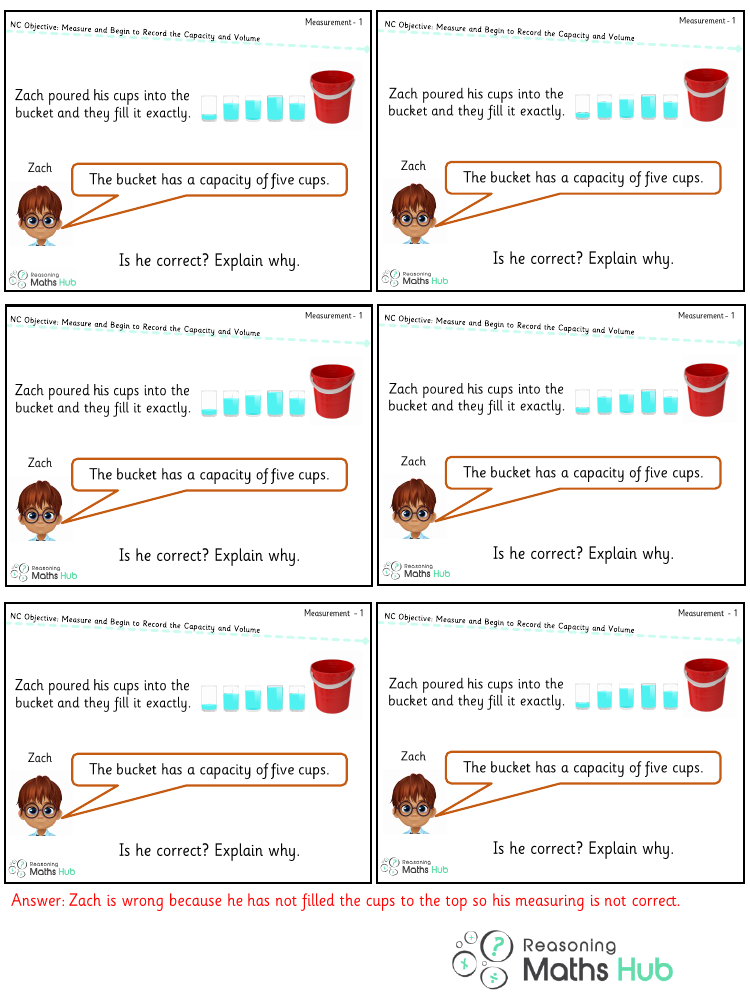Compare, describe and solve practical problems for capacity and volume - Reasoning

Maths Resource Description
In this segment of the curriculum, students engage with the concepts of capacity and volume through a series of practical problems that require reasoning and critical thinking. The aim is to compare and describe real-world scenarios where the measurement of liquids or the space inside containers is relevant. Students are encouraged to discuss and solve problems that may involve different units of measurement and to understand the relationship between capacity (how much a container can hold) and volume (the amount of space an object occupies).
The problems presented are designed to challenge students to apply their knowledge of capacity and volume in various situations. For example, they might compare the capacity of different bottles, determine the volume of water needed to fill a swimming pool, or calculate the amount of soil required to pot a plant. These activities help students to visualise and comprehend the practical applications of these mathematical concepts. By solving these problems, students develop their ability to reason quantitatively and make connections between mathematics and everyday life. The tasks also serve to enhance their problem-solving skills, as they must consider various factors, such as the shape and size of containers, when determining capacity and volume.